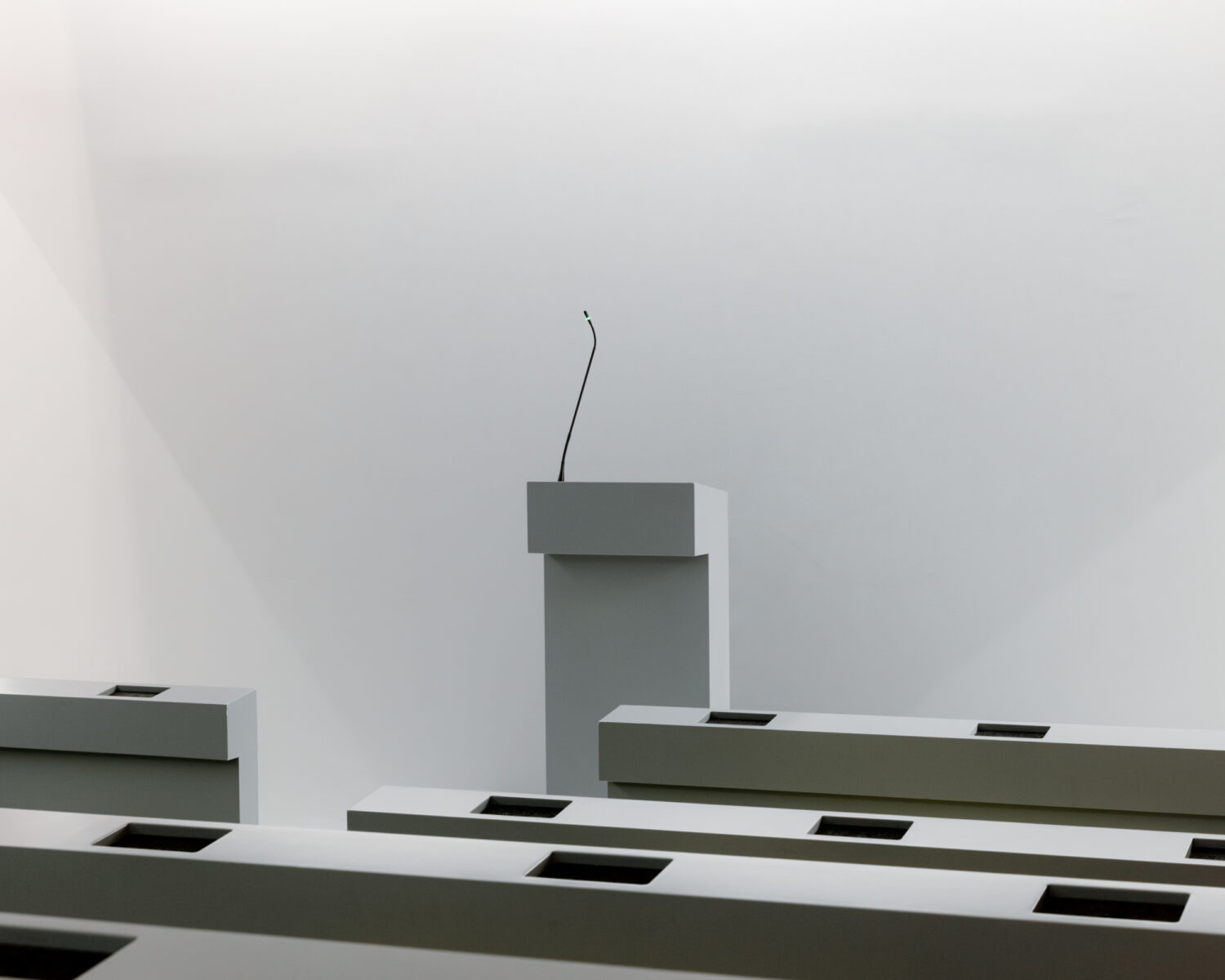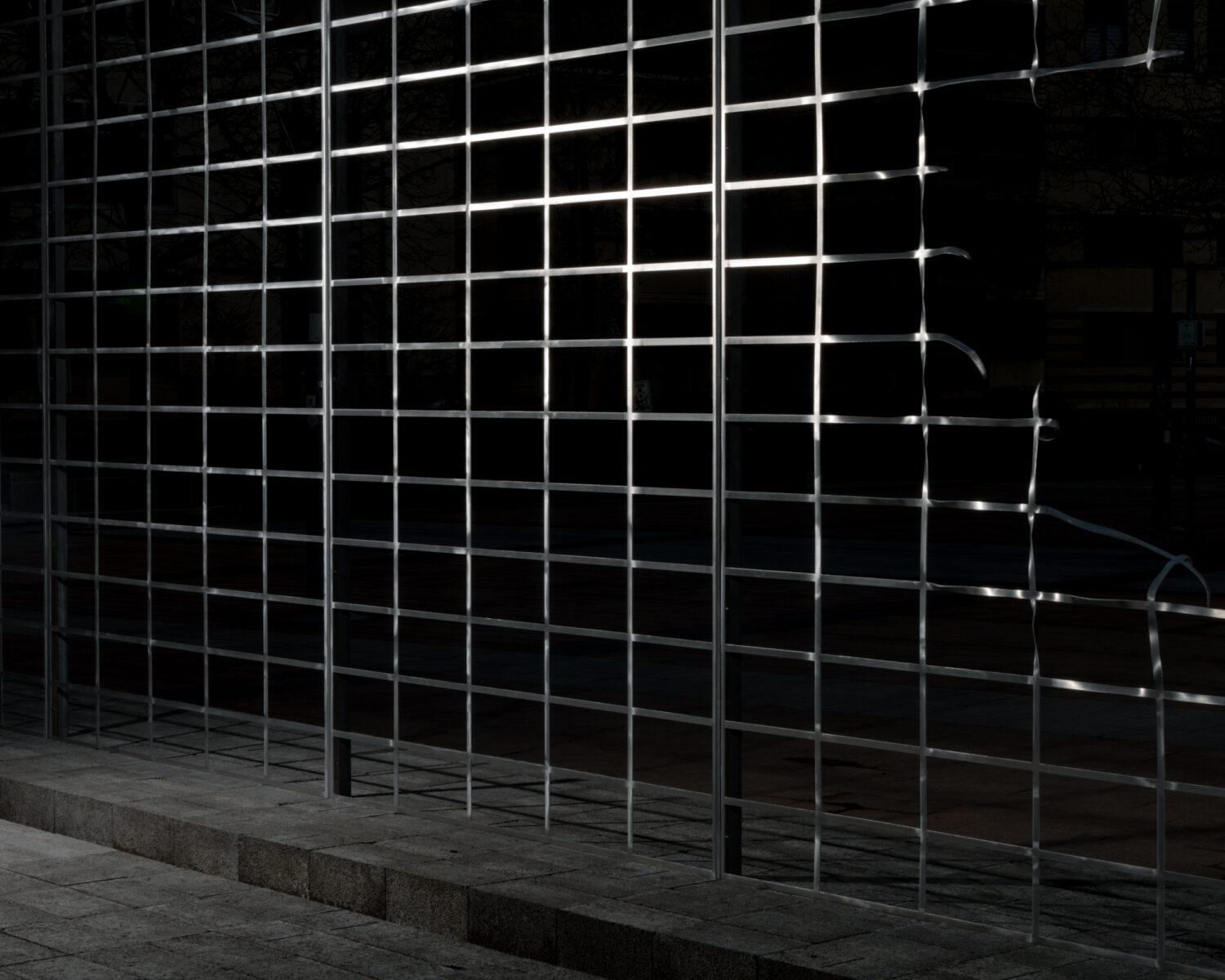Jan Staiger, A circle of 12 gold stars on a blue background.
fotografie
Max Pinckers
Mathieu Asselin
Stoffel De Buysere
#004494, #ffd617.
EG-blauw, EG-geel.
Twee kleuren die de visualiteit van een politieke unie vormgeven, een (politiek) geloofssysteem zo je wilt. De Europese vlag als cruciaal symbool in de manifestatie van een niet tastbare, nauwelijks gedefinieerde pro-Europese visie.
Dit fotografische essay behandelt de overgang van een politieke ideologie van vage intellectuele fragmenten – uitgedrukt in toespraken en documenten – naar een vaste staat van materie, door deze te vertalen naar het fysieke, het ruimtelijke en dus vooral het visuele.
Met het ‚Quartier Européen‘ in de Belgische hoofdstad Brussel als uitgangspunt, volgt dit werk de uitgestalde visualiteit van de politieke communicatie van de EU, terwijl het zich richt op wat we verondersteld worden te zien, te aanschouwen, vast te leggen. Bezoekerscentra, jeugdevenementen, merchandise, rondleidingen – gericht op de esthetiek van politiek als overtuigingselement.
Een volledige stadswijk als groen scherm voor de politieke verbeelding.
Een volledig continent ernaast als een minder inwisselbaar decor.
#004494, #ffd617.
EC Blue, EC Yellow.
Two colours, shaping the visuality of a political union, a (political) belief system if you will. The European flag as the crucial symbol in the manifestation of a non- tangible, hardly defined pro-European vision.
This photographic essay addresses the transition of a political ideology from vague intellectual fragments – expressed in speeches and documents – into a solid state of matter, by being translated into the physical, the spatial, and therefore, most importantly, the visual.
Taking the ‚Quartier Européen‘ in Belgian‘s capital Brussels as a point of departure, this work inches along the displayed visuality of EU political communication, while aiming at being directed towards what we are supposed to see, to witness, to record. Visitor centres, youth events, merchandise, guided tours – directed towards the aesthetics of politics as an element of persuasion.
An entire city district as a green screen for the politically imaginary.
An entire continent adjacent to it as a less interchangeable backdrop.

“The more media attention politics wants to attract, the more it leans towards an aesthetic that has to take the aesthetics of the media into account and adapt to it”.
And while this was certainly true when Dörner released his book in 2001, we have been witnessing significant shifts in communication strategies, demanding for an updated contemplation of current aesthetic sublimities. It almost seems as if the visual settings of press conferences or group photos of heads of state – both sceneries playing into the notion of Dörner’s quote – are serving aesthetics, reminiscent of a past political status quo, enacted to reassure the media sphere of its continued relevance. And we buy into it, not willing to notice or acknowledge that we are slowly turning into exhibits in museum-like environments, illuminated by the very spotlights we initially brought into the very spaces ourselves.
A couple of rooms further, political agendas are staged and premiered in short choreographies of 15 seconds.
Spotlights – missing.
Authenticity – present.
Politicians however, missing as well.

